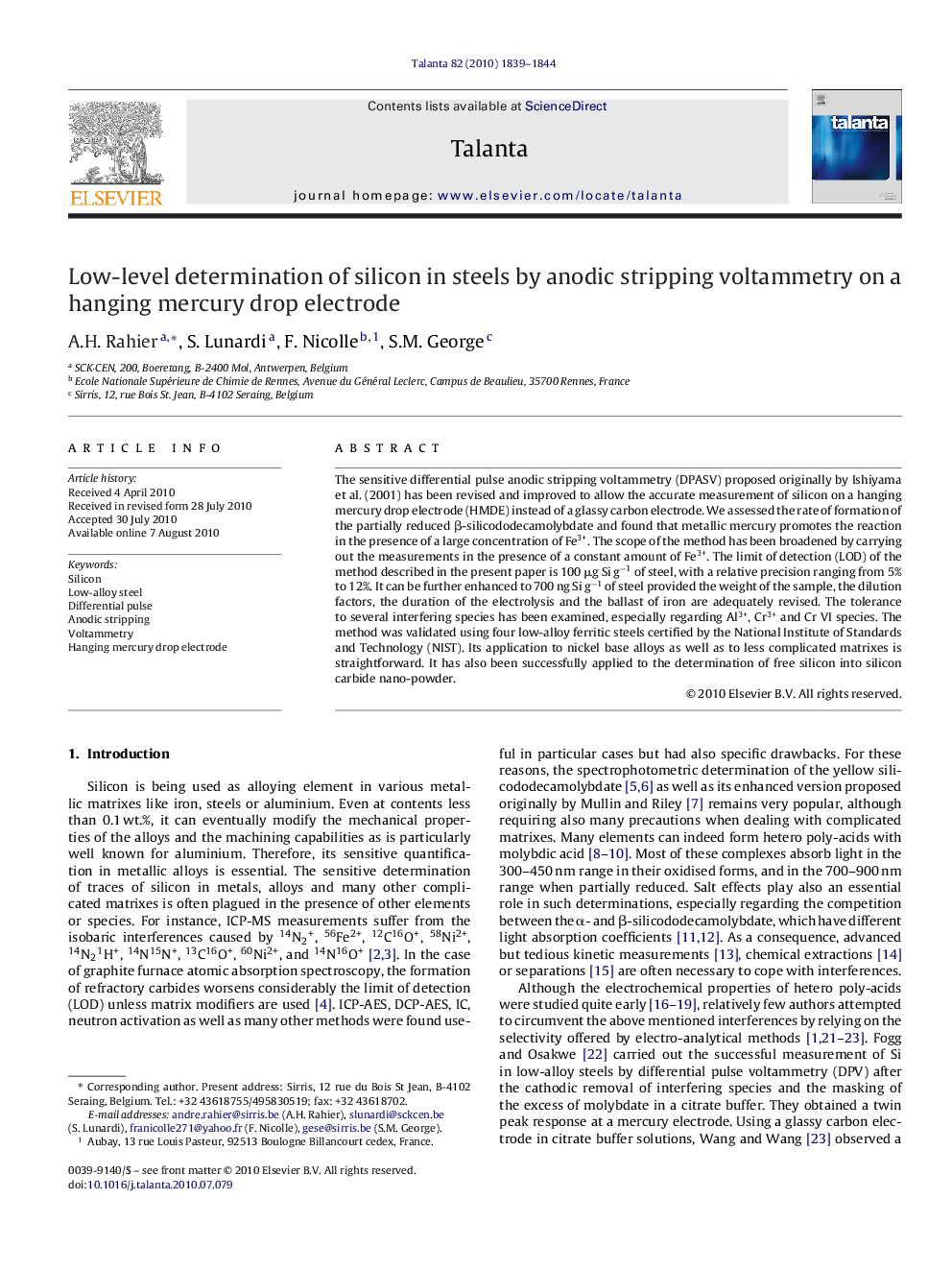| Article ID | Journal | Published Year | Pages | File Type |
|---|---|---|---|---|
| 1246208 | Talanta | 2010 | 6 Pages |
The sensitive differential pulse anodic stripping voltammetry (DPASV) proposed originally by Ishiyama et al. (2001) has been revised and improved to allow the accurate measurement of silicon on a hanging mercury drop electrode (HMDE) instead of a glassy carbon electrode. We assessed the rate of formation of the partially reduced β-silicododecamolybdate and found that metallic mercury promotes the reaction in the presence of a large concentration of Fe3+. The scope of the method has been broadened by carrying out the measurements in the presence of a constant amount of Fe3+. The limit of detection (LOD) of the method described in the present paper is 100 μg Si g−1 of steel, with a relative precision ranging from 5% to 12%. It can be further enhanced to 700 ng Si g−1 of steel provided the weight of the sample, the dilution factors, the duration of the electrolysis and the ballast of iron are adequately revised. The tolerance to several interfering species has been examined, especially regarding Al3+, Cr3+ and Cr VI species. The method was validated using four low-alloy ferritic steels certified by the National Institute of Standards and Technology (NIST). Its application to nickel base alloys as well as to less complicated matrixes is straightforward. It has also been successfully applied to the determination of free silicon into silicon carbide nano-powder.
